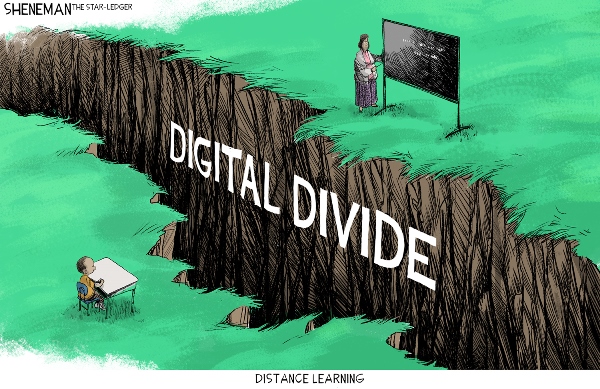By Doug Milburn, Founder of 45Drives
Giving Microsoft Windows Credit Where It’s Due
Before we embark on the journey of Demicrosoftification, it’s essential to acknowledge the contributions of Microsoft Windows to the world of computing. Microsoft has been a dominant player for decades, providing an operating system that is widely recognized and utilized across various markets. Their software has served both personal and enterprise environments effectively and remains the most popular operating system globally. The familiarity and extensive use of Microsoft Windows highlight its significant influence and success.
RELATED: How to incorporate AI in the enterprise
That said, in recent years, a considerable groundswell has occurred within the open-source community. This movement is largely user-driven, characterized by a motivated community collaborating to solve its problems. Unlike the top-down approach of corporations, where solutions are dictated, open-source solutions are developed through cooperation. This process leverages the collective intelligence of a diverse group of contributors, invoking a powerful ‘collective mind’. This isn’t forced adoption; it’s about people voicing their needs and desires in enterprise and personal computing, resulting in solutions that are not only powerful and flexible but also more aligned with user requirements.
Open-source software now dominates most servers, showcasing its robustness and versatility. For instance, over 70% of web servers operate on Linux, a testament to the efficiency and reliability of open-source solutions. However, despite the dominance of open-source on servers, desktops remain largely proprietary, with Microsoft holding a substantial market share.
Why Open Source?
Open-source software is not just about being free; it works, and it is technically solid. The ecosystem and network effects of open-source contribute significantly to its success. The availability of compatible hardware and a large pool of skilled employees further enhance its appeal. Moreover, open-source software offers an extensive range of application software, providing users with numerous choices. The collaborative nature of open source ensures that solutions are continuously improved, driven by the needs of the community rather than corporate interests.
Despite Microsoft’s success, there are several compelling reasons to consider alternatives. Microsoft’s behavior, such as forced updates, can be particularly irritating for sophisticated organizations that require careful vetting of updates. While security updates are crucial, many other updates add little value and can disrupt workflows. User interface changes are often driven by branding and corporate directions, which can distract and waste time and money for serious businesses. The forced adoption of Windows 8, with its touchscreen-oriented design, is a prime example of how such changes can negatively impact users. Microsoft decided that all users should interact with their computers like touchscreen smartphones, forcing this change upon users without considering the needs of those who rely on traditional desktop environments.
Security is another major concern when it comes to Microsoft products. Giants like Microsoft are prime targets for ransomware and malware attacks. Additionally, the “phone home” behavior of their software raises serious security concerns. Organizations aiming for a zero-trust security model find it challenging to align with such practices. The risk of sensitive information being transmitted back to Microsoft servers, intentionally or unintentionally, is incompatible with the stringent security requirements of many enterprises.
Alternatives to Microsoft
While there are alternatives like Google’s Chromebooks and network application suites, they come with their own set of limitations. Chromebooks, for example, offer less control over the environment, with Google deciding the software users have access to. Additionally, their cloud-based solutions may not be suitable for highly secure environments. Cloud security issues, including data loss and hacks, pose significant risks that cannot be overlooked.
Linux, as an open-source operating system, presents a viable alternative. Modern Linux desktops offer a user-friendly experience similar to proprietary systems. With an open-source license, users have full control over their software, including updates and notifications, avoiding the pitfalls of forced updates. Linux can be hardened by default, enhancing security, and it supports a wide range of applications. This flexibility and control are crucial for organizations that prioritize security and customization.
Transitioning to Linux and open-source software comes with its own set of challenges, such as the lack of native support for some specialty software. However, this can be mitigated by the fact that many users are not deeply familiar with Windows or Office, making the switch less daunting. Linux desktops and office substitutes adopt similar interfaces, easing the learning curve. Organizations can invest in training to ensure consistent results and high productivity, a practice that would be beneficial even with Microsoft products. Training employees on new software is an investment that pays off by increasing overall efficiency and user satisfaction.
At 45Drives, we are committed to leading the Demicrosoftification movement. We are currently in the process of transitioning our support and R&D teams from Microsoft to Linux. This transition includes using a hardened-by-default Linux kernel for enhanced security. We have chosen Kubuntu as our base distribution due to its reliability and user experience similar to Windows, making the transition smoother for new users. Some members of our R&D team may use different desktop environments, but they will all benefit from the security and flexibility provided by the hardened Linux kernel.
Our own internal journey towards Demicrosoftification is not just theoretical or strictly philosophical; we are actively implementing these changes within our organization. We believe in the principles of modular, open-source solutions that are easy to “plug and play,” and we strive to provide highly personalized service for enterprises. We are moving away from the legacy enterprise IT vendors and their bloated, slow, cloud-based, and proprietary software-based models. Instead, we are embracing a model that empowers users and provides them with the tools and flexibility they need to succeed.
The 2024 Creator Summit: Exploring Demicrosoftification
This year’s Creator Summit, hosted in August at our headquarters in Cape Breton, Nova Scotia, will delve deeply into the concept of Demicrosoftification. We will explore this new paradigm in enterprise computing with our customers, channel partners, content creators, analysts, journalists, clients, and the general public. The theme of this year’s Summit, “Demicrosoftification,” reflects our commitment to this movement. We will discuss the challenges and opportunities of transitioning away from legacy systems and how open-source solutions can provide superior performance, security, and flexibility.
Demicrosoftification represents a significant shift in the approach to enterprise computing. It’s about moving away from legacy systems and embracing open-source, modular, and user-driven solutions. At 45Drives, we are leading this charge by implementing these principles within our organization and sharing our journey with the broader community. Join us at the Creator Summit as we pave the way for a more open, secure, and efficient future in enterprise IT. Together, we can build a world where businesses have big, strong, fast servers and server clusters that they own and control, ensuring performance and security are never compromised.
Dr. Doug Milburn is a long-time serial entrepreneur and innovator who has brought his vision and passion to manufacturing, engineering, software development, and process engineering for more than 35 years. Throughout his leadership, Dr. Milburn has aimed to create great workplaces by shaping a company’s success through corporate values and ethical guidelines.





























